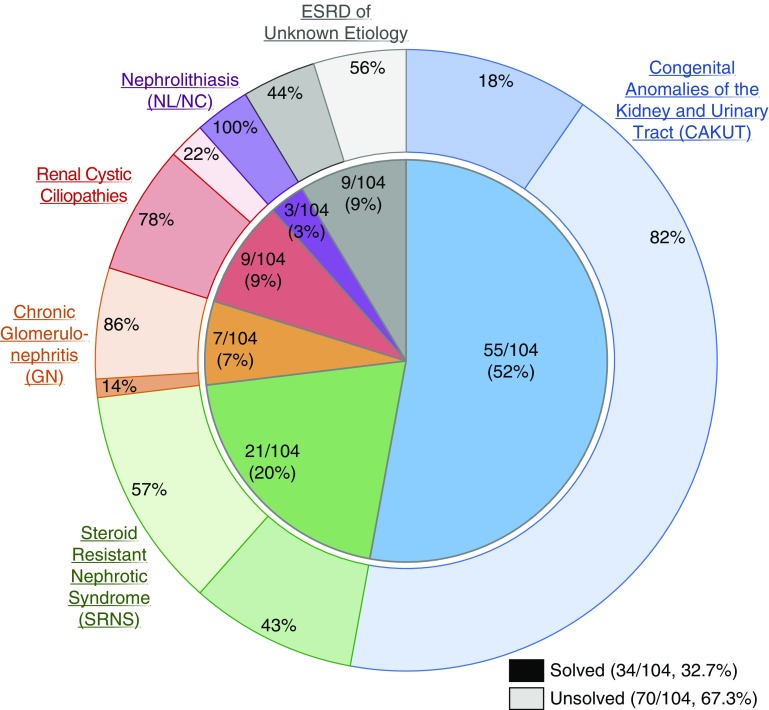Figure 1.
A monogenic cause of ESRD is identified in 32.7% of renal transplant recipients with onset of CKD before 25 years of age. Probands are categorized by clinical diagnostic group. Inner segments represent the numbers and fractions (in %) of transplant recipients that fall into one of six clinical diagnostic groups, as follows: CAKUT, 55 out of 104 (52%); SRNS, 21 out of 104 (20%); chronic GN, seven out of 104 (7%); renal cystic ciliopathies, nine out of 104 (9%); nephrolithiasis or nephrocalcinosis (NL/NC), three out of 104 (3%); and ESRD of unknown etiology, nine out of 104 (9%). Outer segments represent for each diagnostic group the relative fraction of patients in whom a molecular genetic diagnosis was established (darker colors). A disease-causing mutation was identified in 34 out of 104 families (32.7%). The distribution by clinical diagnostic group is as follows: a molecular diagnosis was established in ten out of 55 (18%) patients with CAKUT, nine out of 21 (43%) patients with SRNS, one out of seven (14%) patients with GN, seven out of nine (78%) patients with a renal cystic ciliopathy, three out of three (100%) patients with nephrolithiasis, and four out of nine (44%) patients with ESRD of unknown etiology.

